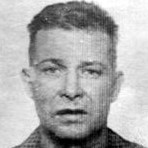
d: 1963
Ralph James Hudson
Summary
Name:
Ralph James HudsonYears Active:
1960Status:
ExecutedClass:
MurdererVictims:
1Method:
StabbingDeath:
January 22, 1963Nationality:
USA
d: 1963
Ralph James Hudson
Summary: Murderer
Name:
Ralph James HudsonStatus:
ExecutedVictims:
1Method:
StabbingNationality:
USADeath:
January 22, 1963Years Active:
1960bio
Born around 1920 in Coatesville, Pennsylvania, Ralph Hudson worked as a carpenter and later at a shipyard. He resided in Pottstown, Pennsylvania from the mid-1930s until 1957, where his mother, stepfather, and three teenage children from previous relationships lived. Hudson met Myrtle—his third wife—when she worked alongside him at a restaurant in Atlantic City. They married on October 27, 1959, but their relationship quickly dissolved due to his escalating violence and long-standing history of abuse, arrests, and aggressive behavior.
Between 1947 and 1957, Hudson had seven arrests for public intoxication and disorderly conduct. He was also convicted of assault, battery, and attempted burglary in 1960 for entering a home that sheltered Myrtle. He served six months in jail before being released early on December 22, 1960.
murder story
On December 27, 1960, Hudson embarked on a drunken rampage that began around 2:30 a.m., when he rang the Lighthizer family's home and issued threats to Myrtle. Later, he confronted them again around 12:30 p.m., leading them to file a complaint at the police station.
Moments after, armed with a bread knife purchased from a discount store, Hudson entered the restaurant where Myrtle worked. He approached her from behind, stabbed her at least twice in the lower chest—one wound pierced her heart—and uttered chilling taunts: “Nobody’s going to double cross a Hudson,” and “Die, Myrtle. Suffer.” During the attack, he spat on her, threatened her son, and told bystanders not to help her. Witnesses subdued him after hitting him with a chair, causing him to drop the weapon. Myrtle succumbed to massive hemorrhaging from her wounds.
Despite prosecutors offering a plea deal for second-degree murder—thus avoiding a death sentence—Hudson insisted on standing trial for first-degree murder. The trial in 1961 spanned five days, with a jury of 12 (8 men, 4 women). Hudson acknowledged the killing on the stand, though he claimed intoxication had caused memory lapses.
Prosecutors countered, presenting sober witness accounts and threats Hudson made in the lead-up. After deliberation, the jury convicted him of first-degree murder, and he was sentenced to death—no alternative punishment was available under New Jersey law at the time.
Shortly before his execution, Hudson’s attorney made a clemency plea to Governor Richard J. Hughes—citing intoxication and his remorse—which was ultimately denied.
Hudson spent approximately 13 months on death row at Trenton State Prison, described as a model inmate who gained weight and was eager to settle his fate. On January 22, 1963, he shared a final meal with fellow inmates, entered the death chamber at 9:56 p.m. accompanied by a Methodist priest, and was executed via electric chair at 10:03 p.m. Witnesses (about 50, including prison staff) observed his calm demeanor; he made no final statement. Protestors gathered outside the State House—some opposed, others supported the sentence.